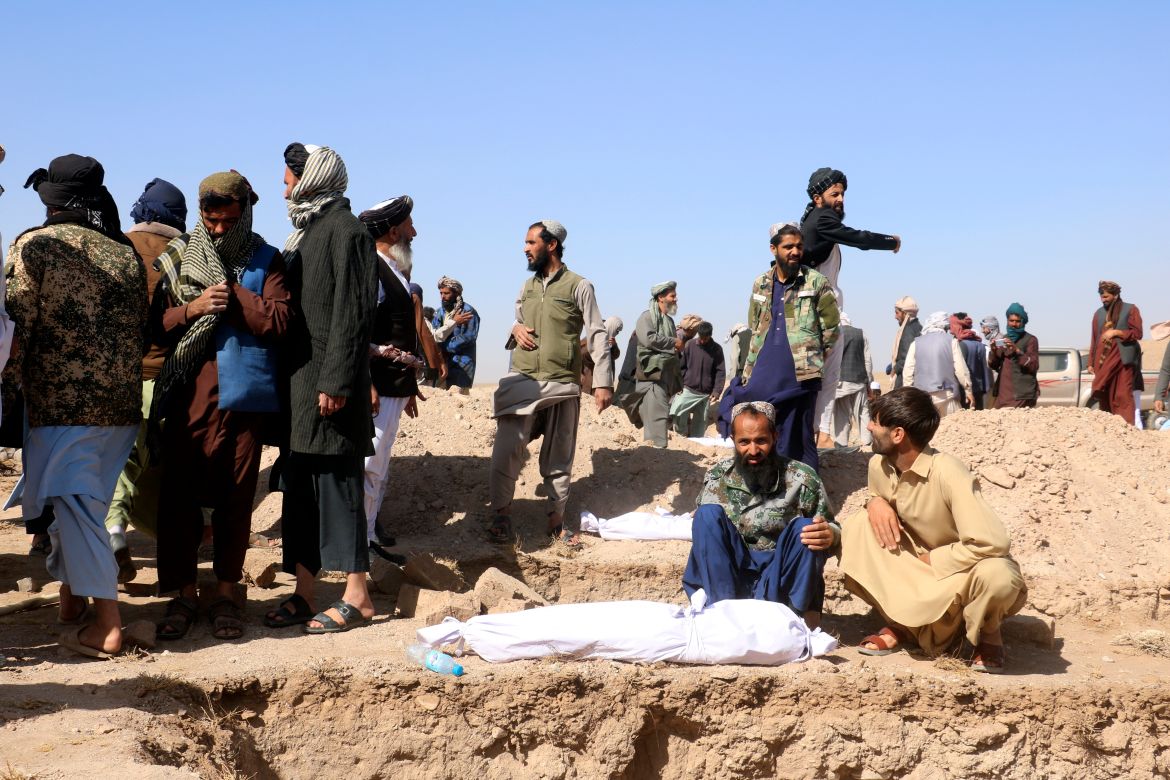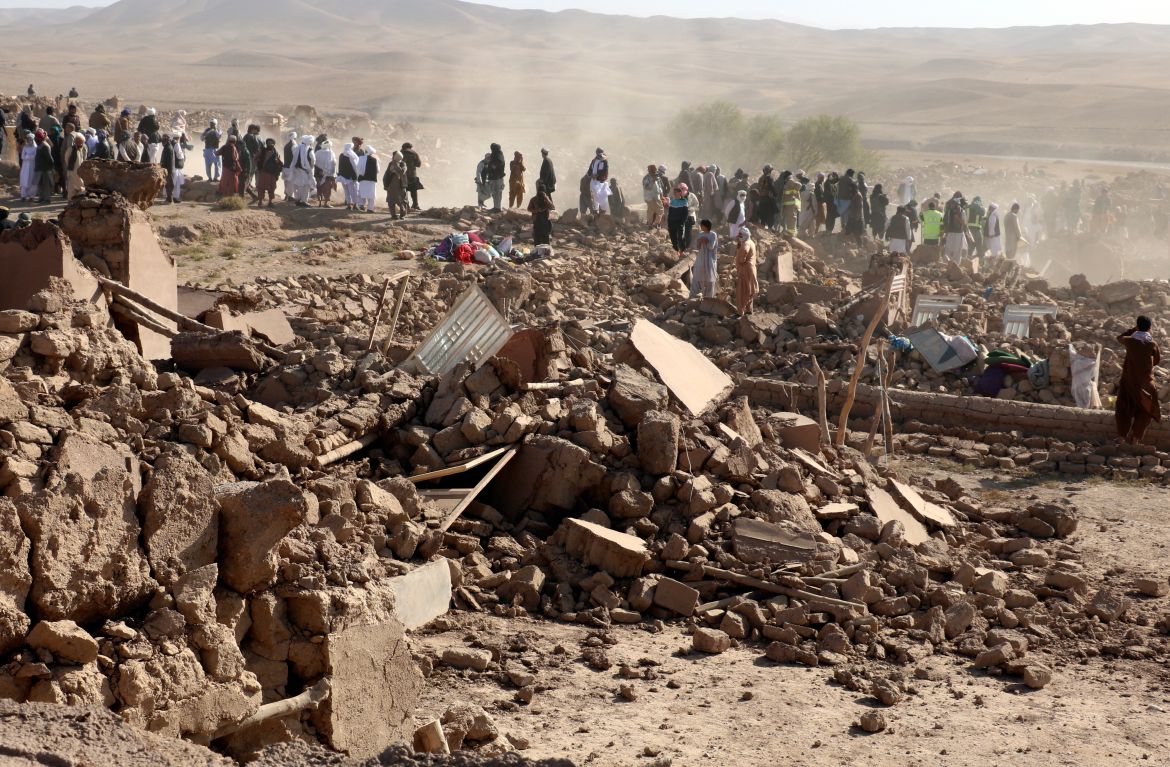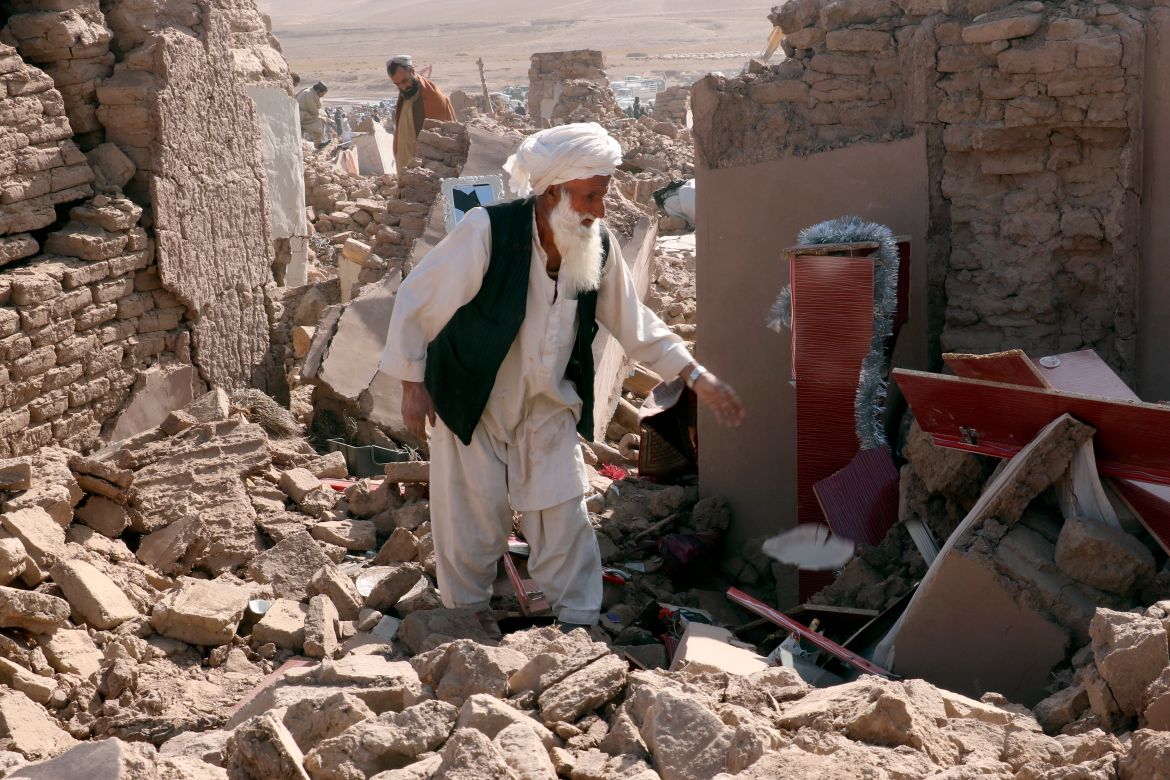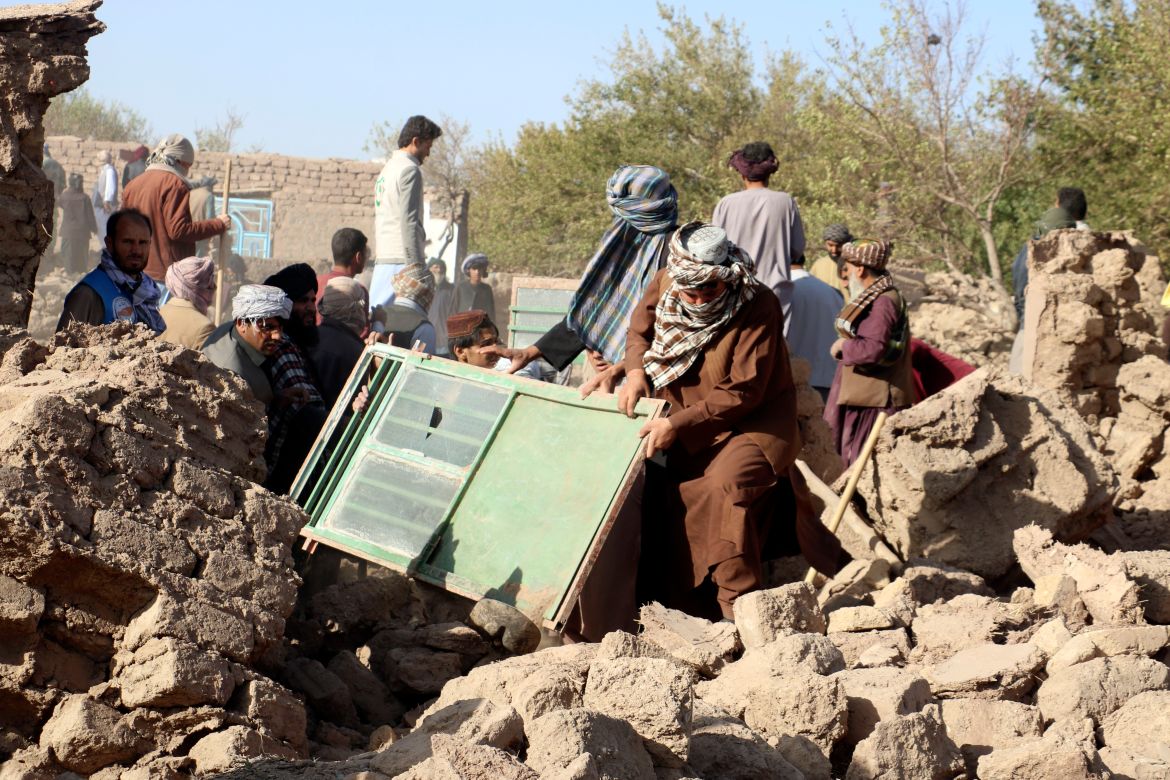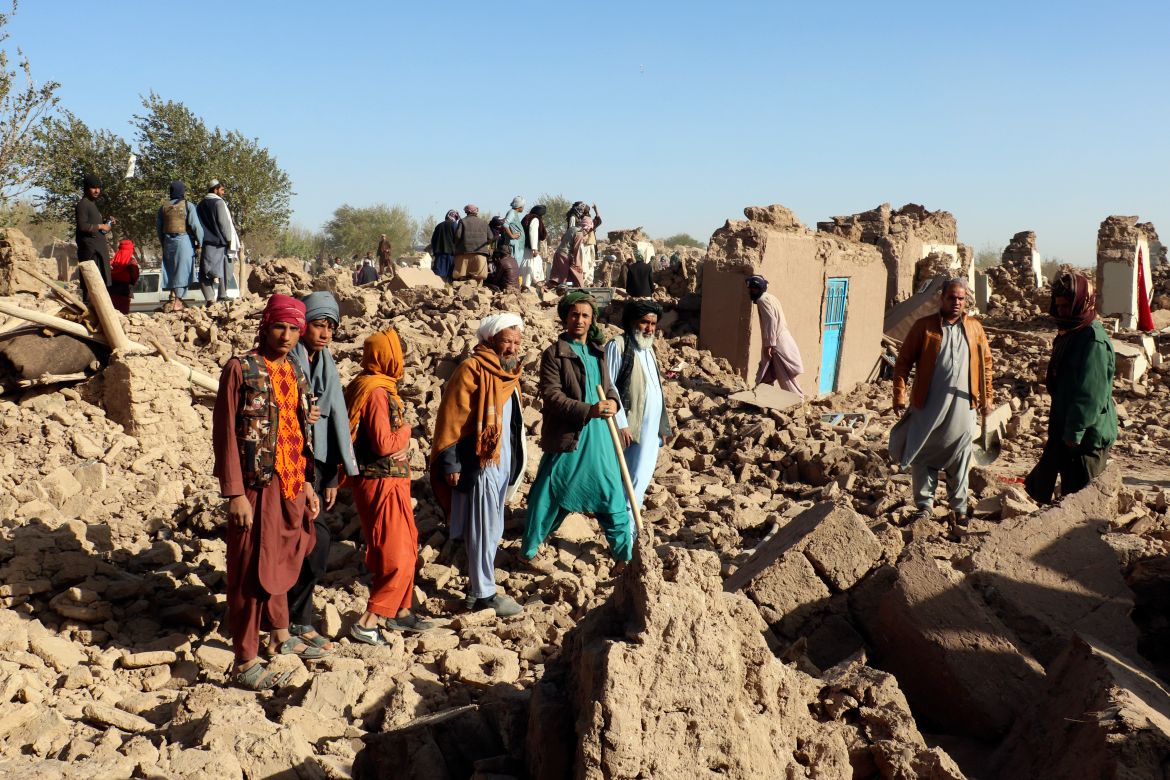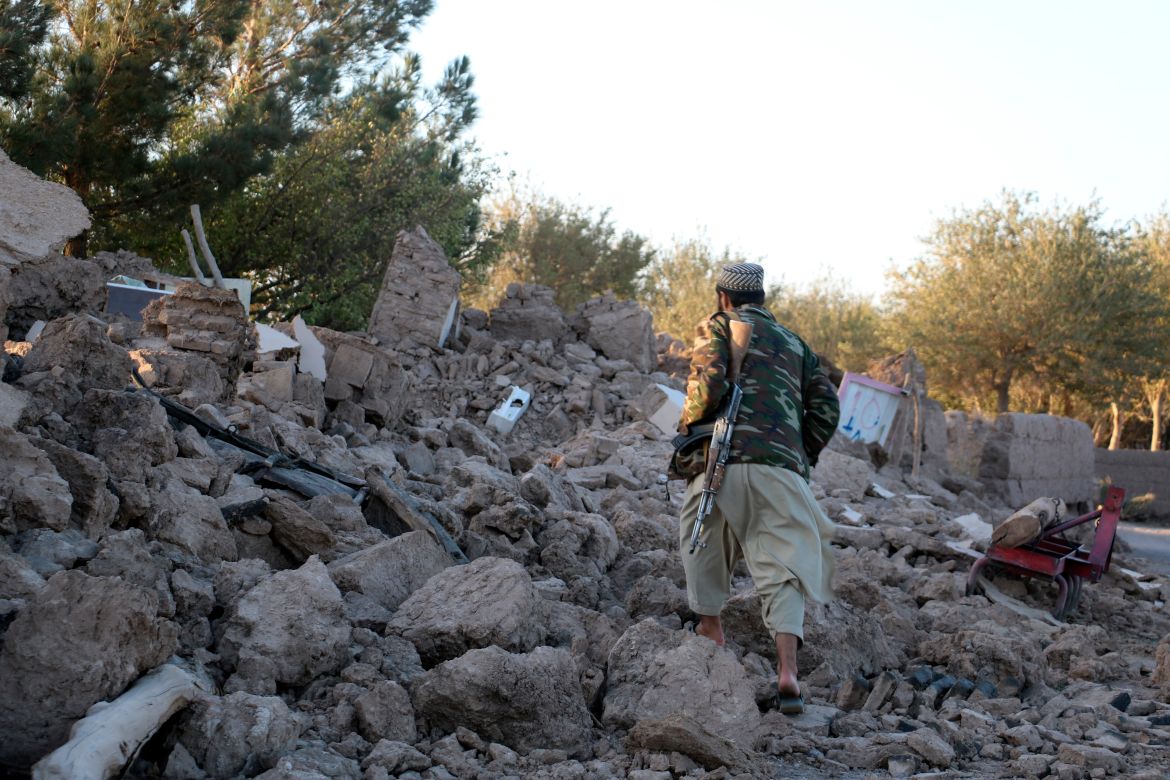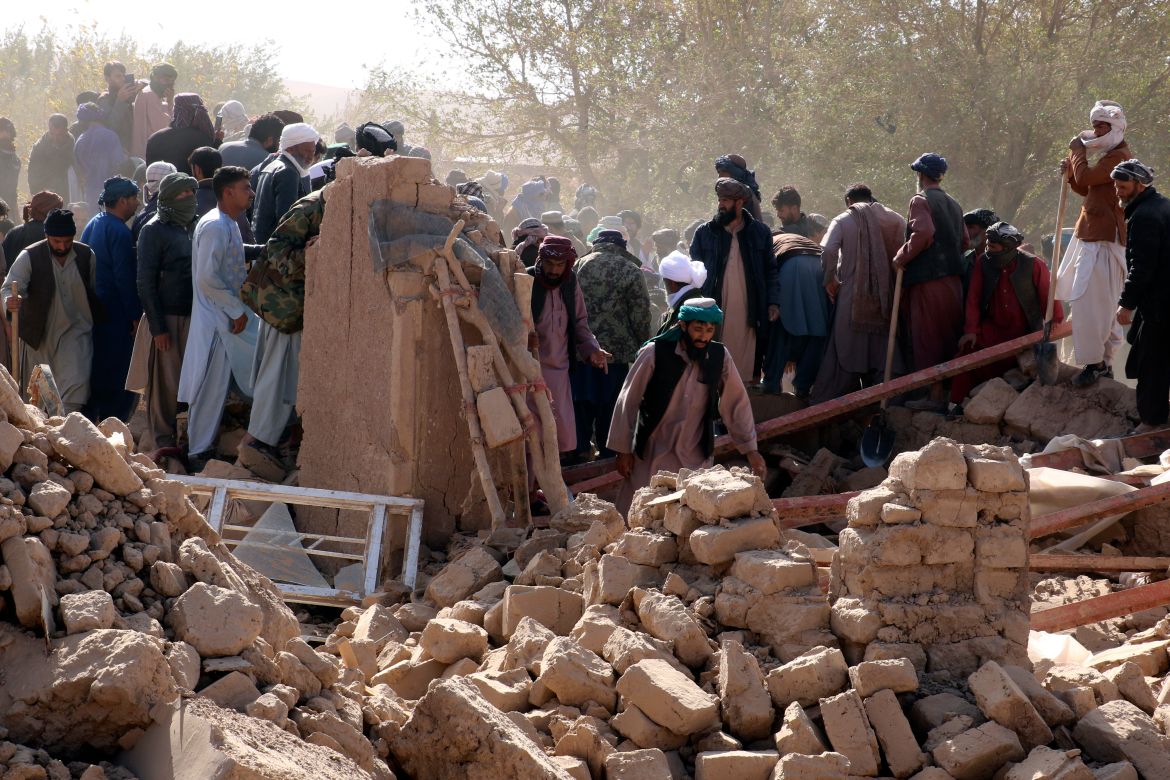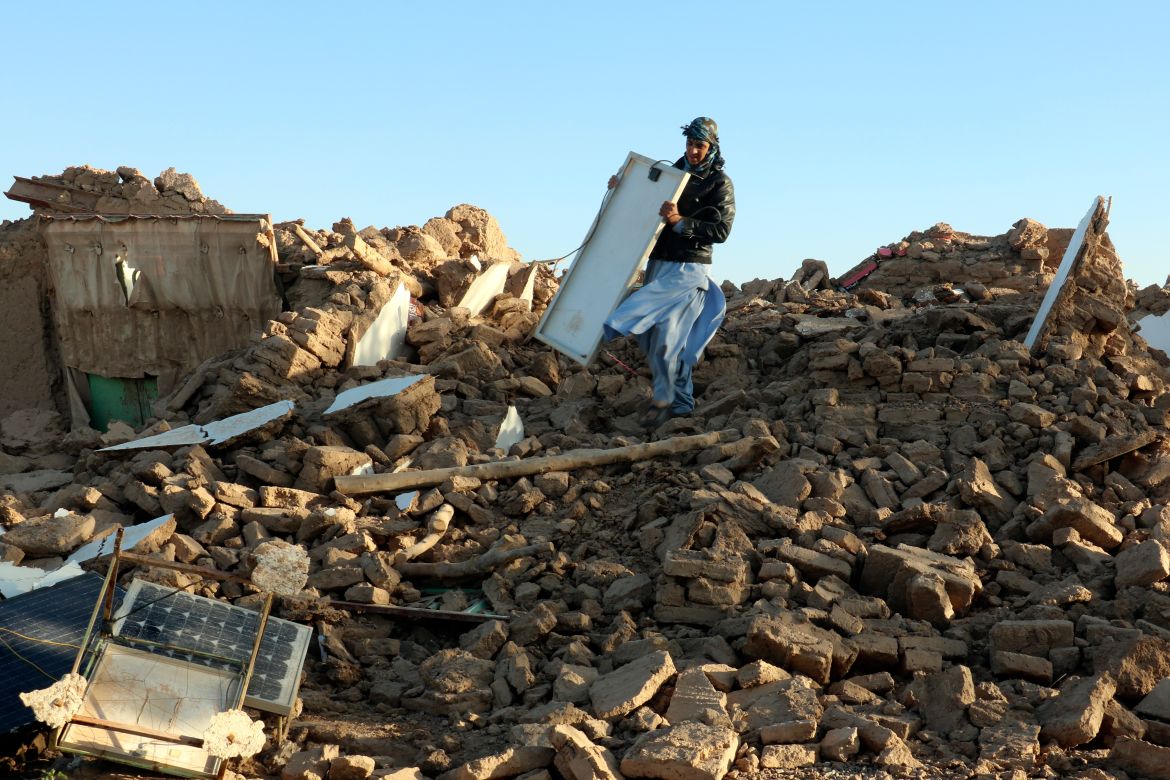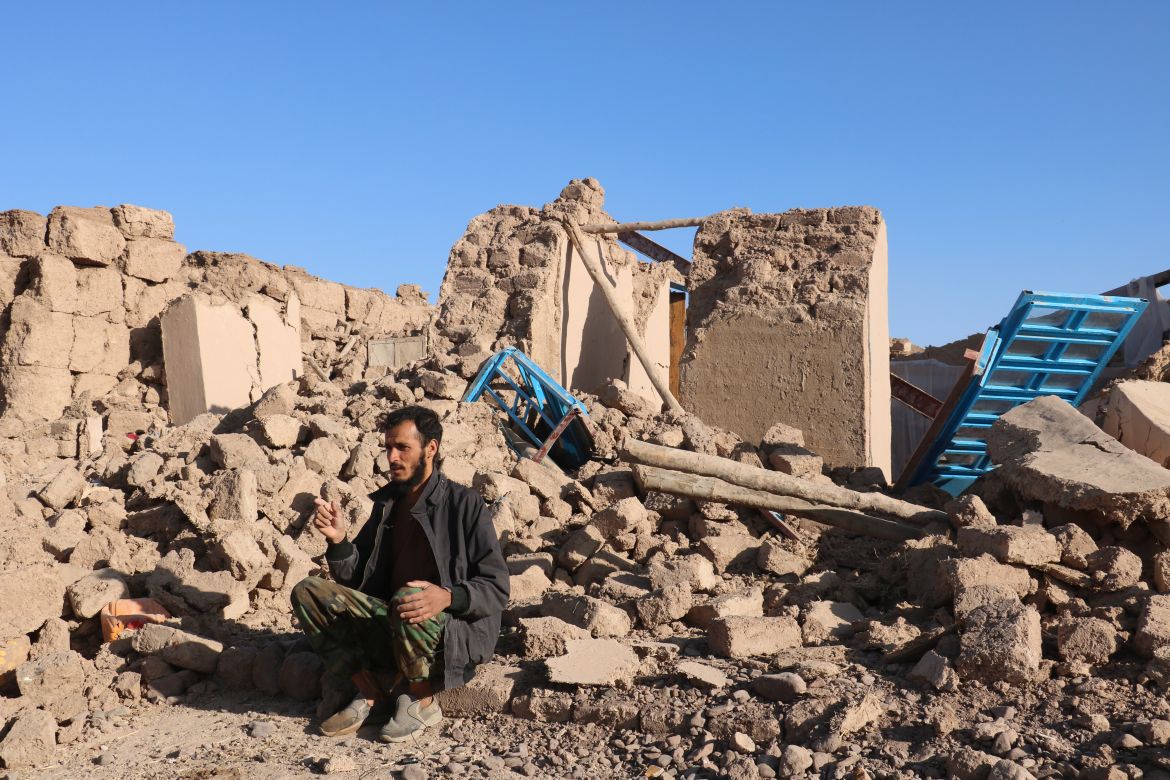In Pictures
Looking for the dead and wounded as Afghanistan quakes kill 2,000
Villages are flattened and bodies trapped under collapsed houses as locals and rescue workers dig out victims.
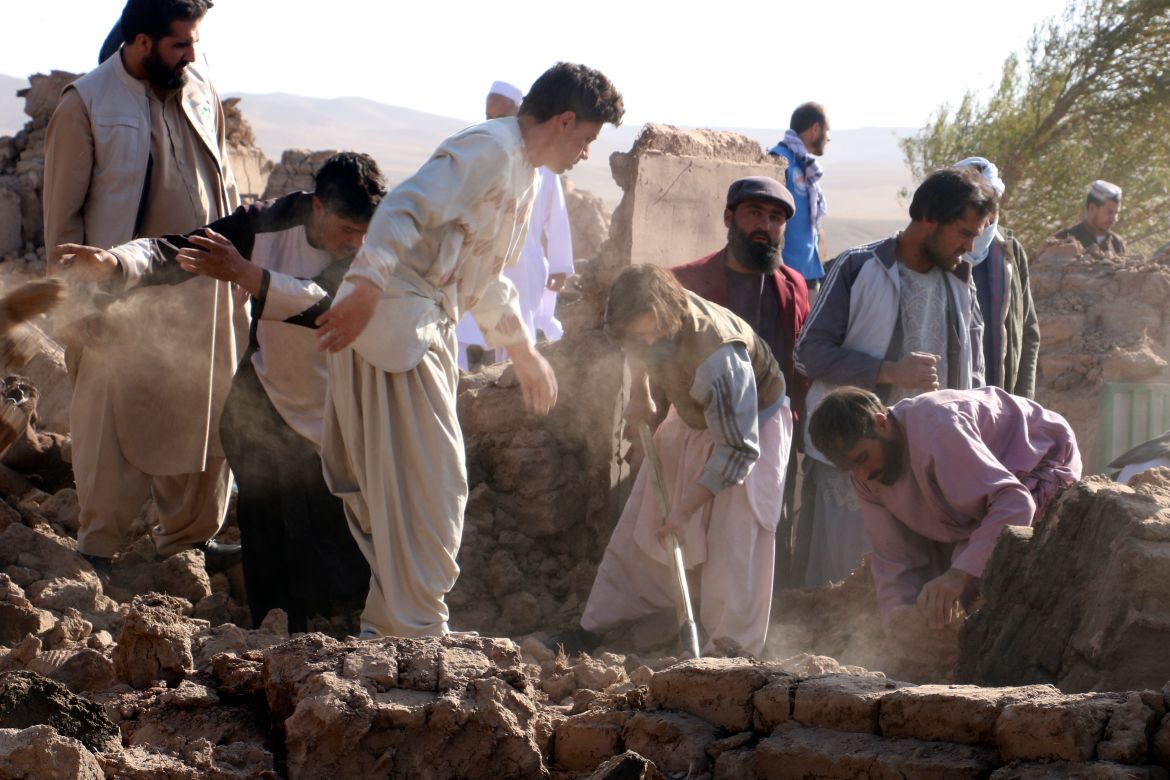
Men are digging through rubble with their bare hands and shovels in western Afghanistan in desperate attempts to pull victims from the wreckage left by powerful earthquakes – some of the deadliest to hit the impoverished South Asian country.
Officials of the ruling Taliban on Sunday said at least 2,053 people were killed and nearly 10,000 injured while more than 1,300 houses were damaged or destroyed.
Saturday’s magnitude 6.3 earthquake hit a densely populated area near Herat, Afghanistan’s fourth largest city. It was followed by strong aftershocks.
The death toll eclipses that of an earthquake that hit eastern Afghanistan in June last year, striking a rugged, mountainous region, flattening stone and mud-brick homes and killing at least 1,000 people.
“Most people were shocked. … Some couldn’t even talk. But there were others who couldn’t stop crying and shouting,” Associated Press photographer Omid Haqjoo said.
At least a dozen teams are helping with the rescue effort, officials said, including from the military and nonprofit organisations such as the Red Crescent.
Irfanullah Sharafzai, spokesman for the Afghan Red Crescent Society, said seven teams were busy with rescue efforts while others were arriving from eight nearby provinces. The group has set up a temporary camp for the displaced, Sharafzai said.
The International Organization for Migration, a United Nations agency, deployed four ambulances with doctors and psychosocial support counsellors to the regional hospital. At least three mobile health teams were on their way to the Zenda Jan district, which is one of the worst hit areas.
Doctors Without Borders set up five medical tents at Herat Regional Hospital to accommodate up to 80 patients. Authorities have treated more than 300 patients, according to the agency.
UNICEF dispatched thousands of supplies, including winter clothes, blankets and tarpaulins as temperatures dropped. Some aid groups, like the World Food Programme, were already on the scene with essential items.
